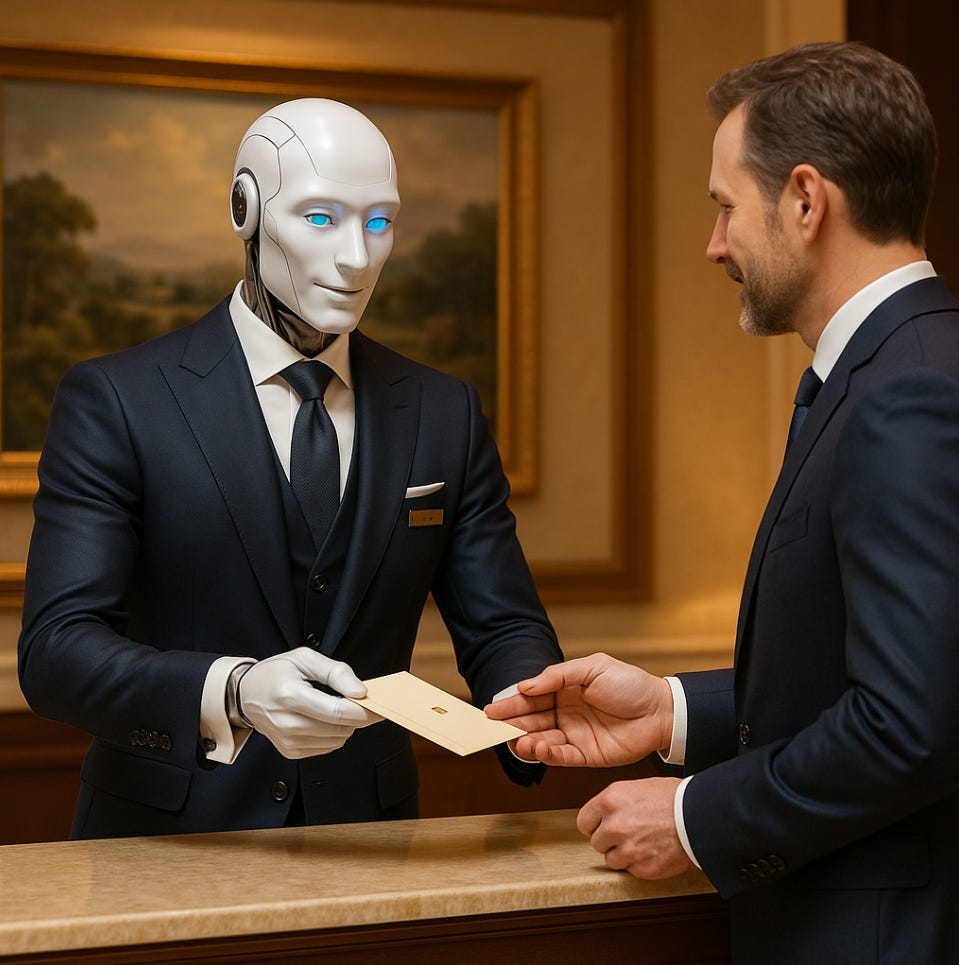The Rise of Humanoid Robots: Where They’re Headed & Who’s Quietly Winning
We’re officially entering the era where humanoid robots are becoming more than sci-fi. As tech giants and emerging startups alike race to build machines that walk, talk, and work like us, it’s becoming clear that the most profitable use cases are closer than we think.
This isn’t just about cute robots or novelty. It's about solving massive, global economic problems — from labor shortages and aging populations to industrial inefficiencies.
Let’s break down the most lucrative use cases, what top companies are building, and which under-the-radar players could lead the next wave.
🔧 Why Humanoid Robots?
Humanoid robots aren’t just about mimicking humans for aesthetic reasons. They’re strategically built to:
Navigate human environments without needing to redesign spaces (think: stairs, doorknobs, tools).
Handle a wide variety of physical tasks using humanlike hands and motion.
Interact more naturally with people, whether for caregiving or customer service.
The goal isn’t to replace people — it’s to fill in where humans are overworked, unavailable, or too expensive to justify repetitive, dangerous, or 24/7 labor.
💰 Most Profitable Use Cases (Right Now)
1️⃣ Industrial & Logistics Automation
Factories and warehouses are the first battleground for humanoid adoption. These environments are predictable, controlled, and labor-intensive — perfect for robotic augmentation.
Tasks:
Box lifting, palletizing, sorting
Conveyor-line inspections
Machine tending (loading/unloading)
Basic assembly tasks
Why It Works:
Replaces hard-to-fill manual labor
Reduces injury risk and turnover
Works 24/7 in harsh conditions
Real-World Examples:
Tesla's Optimus: Elon Musk has deployed Optimus bots at Tesla factories for internal testing and light logistics.
Figure AI: Working with BMW on real factory-floor humanoid pilots in the US.
Agility Robotics (Digit): Partnering with Amazon to automate warehouse tasks, including shelf-stocking and package transport.
2️⃣ Retail & Customer Service
Think of humanoids as super greeters. They can answer questions, guide customers, restock light items, and run basic errands.
Tasks:
Front-desk greetings
Restocking, price checks
Customer Q&A in stores, airports, or hotels
Companies:
SoftBank’s Pepper: One of the first widely deployed humanoids in malls, hotels, and stores (Japan, France, Taiwan).
Promobot: Used in Eastern Europe and the Middle East for passport scanning and concierge services.
3️⃣ Elder Care & Companionship
With birthrates falling and populations aging across Japan, Germany, and South Korea, humanoids are being developed as care companions and helpers.
Tasks:
Monitoring vital signs
Helping with mobility
Medication reminders
Conversational companionship
Key Players:
Toyota's Human Support Robot (HSR): Already deployed in Japanese eldercare facilities for assistance and interaction.
Honda’s ASIMO legacy continues to influence assistive robotics.
4️⃣ Healthcare Logistics
Hospitals are overloaded, and humanoids can help with non-critical tasks.
Uses:
Delivering meds or charts
Escorting patients
Cleaning rooms
Supporting nurses during shifts
Examples:
Beijing AI Institute and Xiaomi Robotics: Developing prototypes for medical support robots in major Chinese hospitals.
UBTECH: China's leader in both educational and medical humanoid bots.
5️⃣ Security & Patrols
In malls, airports, and campuses, humanoid robots now offer 24/7 security presence.
Tasks:
Video surveillance
License plate recognition
Crowd monitoring
Access control & ID verification
Companies:
Knightscope: Patrols shopping centers, casinos, and office buildings in the U.S.
Robotemi: Lightweight humanoid concierge bots used in hospitality and security monitoring.
🌟 3 Underrated Companies to Watch (Sleeper Picks)
While companies like Tesla, Amazon, and Boston Dynamics get the headlines, there are three rising stars building powerful systems quietly in the background:
🥇 1. Sanctuary AI (Canada)
Mission: Build general-purpose humanoids with human-like cognitive capabilities.
Their AI model, Carbon™, is one of the most advanced control systems aimed at mimicking human reasoning.
Early deployments with automotive and aerospace partners in Canada and the U.S.
Backed by OpenAI, Bell, and Evok Innovations.
🥈 2. 1X Technologies (Norway)
Backed by OpenAI, they’re developing a humanoid called EVE, focused on office support, security, and basic household tasks.
Their approach emphasizes AI-physical alignment, ensuring robots can handle real-world feedback loops better than rigid automation.
🥉 3. Fourier Intelligence (China/Singapore)
Originated in physical therapy robotics.
Pivoted into humanoid robotics with GR-1, a general-purpose walker designed for lab assistance, logistics, and elderly care.
Quietly signed deals with research hospitals and Chinese universities.
Not on most Western radars — yet.
📈 Outlook: What Comes Next?
The next five years will likely mirror what cloud computing and smartphones did in the 2010s — a platform shift. Humanoid robots will:
Start in narrow use cases (factories, elderly homes, retail)
Improve via reinforcement learning and human-AI feedback
Be mass-produced by companies like Tesla, Foxconn, or Amazon equivalents
Eventually, we’ll stop calling them “humanoids” — they’ll just be robots that help people work, live, and age better.
🧠 Final Thought
The humanoid race is on, and it’s more than just a tech flex. It’s a once-in-a-generation industrial revolution that could reshape labor, care, and daily life. The companies that win won’t just have better robots — they’ll have real-world applications, smart partnerships, and a clear path to profitability.


